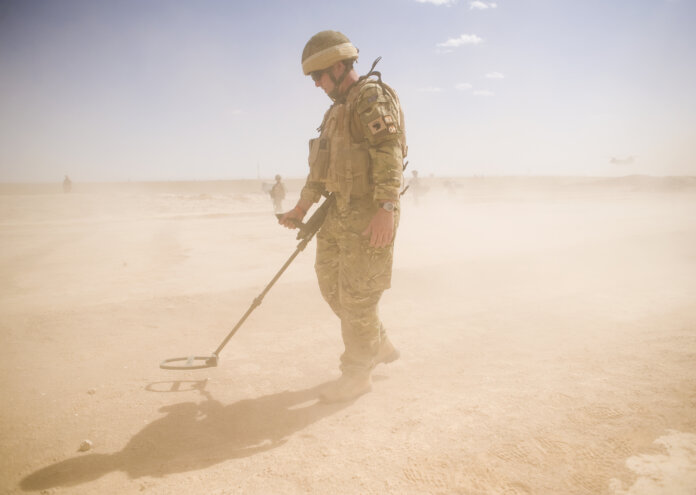
The United Kingdom’s Counter-Improvised Explosive Device (CIED) capabilities are being reinvigorated thanks to the UK Ministry of Defence’s (MOD) Project Crenic. It delivers new capabilities to protect personnel, vehicles and bases against remote-controlled IEDs, according to official MOD literature.
Project Crenic is led by the MOD’s Defence Equipment and Support unit. Project Crenic equipment will be delivered across the British Army, Royal Marines and Royal Air Force (RAF) Regiment. The latter performs soldiering tasks relevant to the RAF.
In late October the MOD awarded a $55 million contract to Team Protect, Project Crenic’s Systems Integrator (SI). Team Protect comprises Leidos Innovations, Leonardo, Marshall Land Systems and PA Consulting with the latter leading the project. “The SI acts as a customer friend,” says Lee Gladstone, Leonardo’s head of programme for land cyber and electromagnetic activities. It supplies technical leadership, ecosystem management, integrated logistics and support, vehicle integration, and programme management for the overall effort, he continues. “The role of the SI is to work with industry and the MOD to develop customer, and hence system, requirements.” Team Protect will “understand the market, help develop business cases and help the MOD steer its resources over time.”
Best Practice
Work now begins on the capabilities Crenic will deliver. “The programme is not a closed shop” Mr. Gladstone explains. Rather than being locked into one or more major contractors, Team Protect works with organisations large and small to bring the best capabilities into Crenic and out into deployment. These could include large, traditional contractors alongside small- and medium-sized enterprises or even individual researchers, innovators and engineers inside and outside defence. The goal is creating an ‘ecosystem’ harnessing the most relevant technology out there. Mr. Gladstone expects that capability enhancements will be spun into Crenic CIED systems “over time as threats and capabilities emerge.”
Rob Lambert, a defence and security expert at PA Consulting and lead for Team Protect, says the “project will deliver and sustain force protection capability to keep pace with the threat over the next decade. The first stage of the project will deliver state-of-the-art vehicle and soldier-carried systems to support operations.” Adopting an open architecture approach is key allowing Crenic to “rapidly respond to new threats, new technologies and new requirements,” Mr. Lambert continues.
The open architecture standards Project Crenic uses are “closely aligned with allies, enabling greater cooperation and sharing in the software domain to deliver protection from evolving threats and to improve interoperability,” Mr. Lambert adds. Systems developed for Project Crenic will meet Technology Readiness Level-9 (TRL-9). According to European Union TRL definitions this means a system is proven in an operational environment and is the highest TRL.
The MOD expects initial deliveries of vehicle-mounted and soldier-carried CIED systems from 2026. Over the longer term, the MOD expects Project Crenic to inform developments of future electronic warfare and counter-uninhabited aerial vehicle capabilities.

by Dr. Thomas Withington













